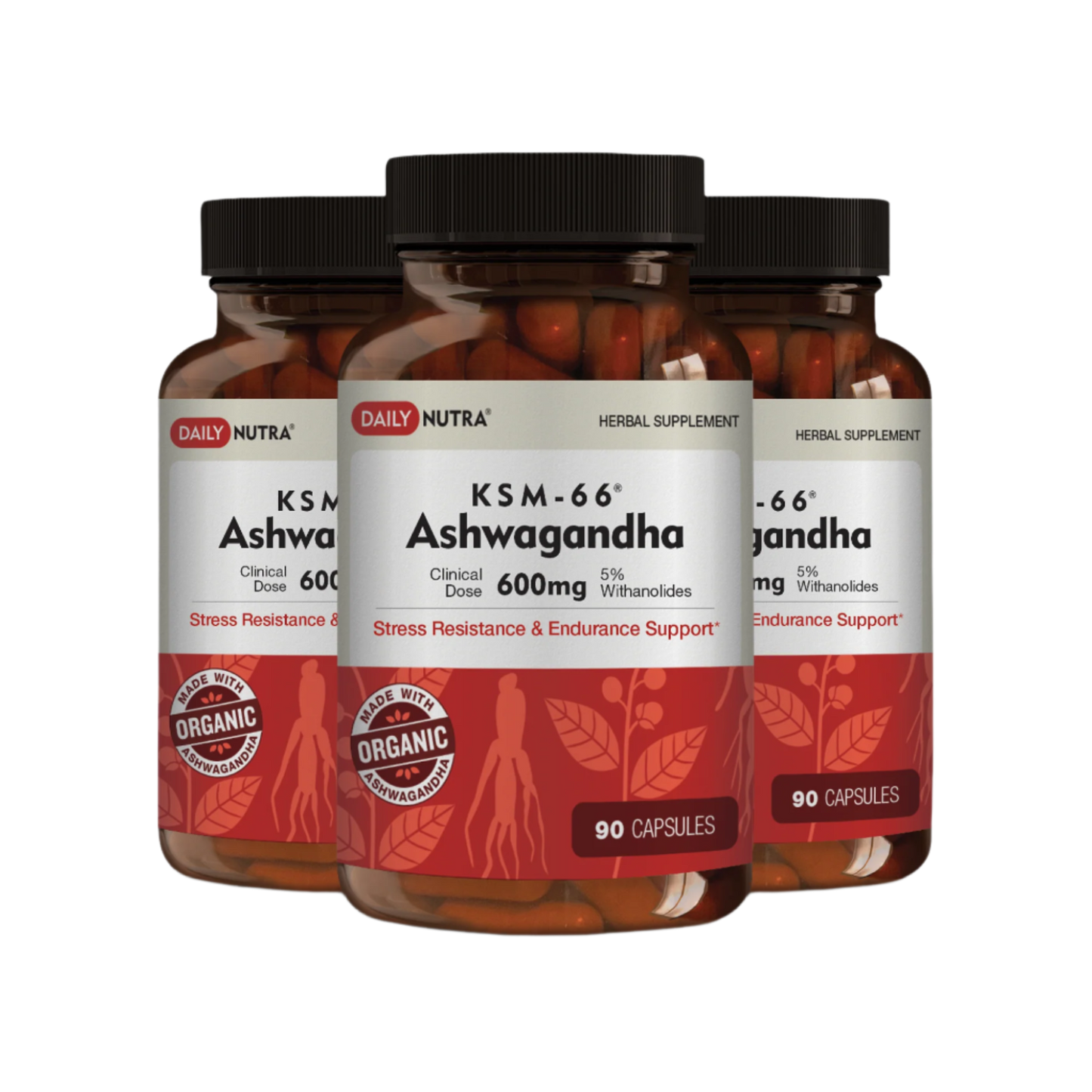
Chaga mushrooms are well known as a natural supplement that promotes a number of health advantages, such as antioxidant and immune-defense capabilities.
One of the most important things to know about this fungus is where it naturally grows.
Those who want to harvest this herbal supplement still need to understand how to choose the right trees for chaga growth.
This article will cover the trees that are best for chaga development, as well as how to identify it and where to find it in its natural habitat.
Chaga mushrooms have been utilized for ages, particularly in Siberia and some regions of North America for traditional medical purposes.
You may already be aware that chaga is a powerful superfood, but its nutritional makeup and therapeutic qualities are also significantly influenced by the tree it grows on.
Understanding the particular trees that promote chaga growth is essential if you want to recognize and collect it.
What Is Chaga Mushroom?
A fungus called chaga (Inonotus obliquus) grows mostly on birch trees in colder areas.
It has a distinct, asymmetrical shape with an exterior layer that is fractured and blackened, like burnt charcoal.
Chaga's interior is cork-like and golden-brown.
Strong antioxidants, immune-boosting qualities, and the capacity to promote general health have all been attributed to this fungus.
The birch tree itself is the source of betulinic acid, one of the medicinal substances that chaga is known for (1).
The health-promoting properties of the mushroom are attributed to these chemicals, which makes it an excellent supplement to wellness programs (2).
The process of harvesting chaga mushrooms requires knowledgeable forest awareness to find suitable trees where the fungus naturally develops.
Chaga isn't just found anywhere.
This fungus requires unique environmental elements combined with appropriate trees, which are fundamental for its survival.

What Trees Does Chaga Grow On?
The growth of chaga mushrooms depends on particular tree species.
The birch tree stands out as the primary tree hosting chaga organic growth (3).
Chaga development takes place ideally within birch trees because their bark, together with their sap, provides all necessary growth conditions for the fungal organism.
The medicinal components of chaga are influenced by the nutrients absorbed from birch tree sap, notably including betulin.
The most widespread growth environment for chaga is birch trees, but this fungal species can occasionally develop on other types of trees.
While birch trees are by far the most common, chaga can also grow on other trees, although much less frequently. Some of the other trees where chaga can sometimes be found include:
- Poplar Trees: Chaga can grow on black poplar and aspen trees. Though it's rarer to find on these trees, poplar trees offer an environment that supports chaga under the right conditions.
- Oak Trees: Oak trees, though not as common as birch trees, may also host chaga under specific circumstances. However, these instances are quite rare compared to the birch trees.
- Alder Trees: In some cases, chaga may grow on alder trees. However, the conditions on alder trees aren't as favorable for chaga as they are on birch trees, making it an uncommon host.
It’s important to note that chaga will never grow on every tree of these species.
For chaga mushrooms to develop properly, the environment needs specific soil quality, optimal moisture levels, and correct climate conditions.

Chaga Identification: How to Spot Chaga on Trees
To successfully identify chaga, people should become familiar with its characteristics during the foraging process.
The unique visual characteristics of chaga mushrooms make them noticeable through long-distance observation.
Chaga mushrooms display an exterior of dark blackish bark with a wood char appearance.
The tough outer layer of this fungal growth features many cracks alongside its appearance of burnt charcoal.
Moving inside the mushroom reveals its lighter features because it has a golden-brown hue with cork characteristics.
Once you understand its appearance, chaga becomes evident to the eye.
Chaga mushrooms typically develop their growth on wood trees, specifically at trunk locations or near large branches at the base or near the trunk.
The appearance of the chaga mushroom changes depending on its age and which tree it grows on.
The chaga that grows on birch trees becomes quite large as the specimens reach immense dimensions.
Regardless of its dimensions, the black exterior and golden interior patterns stay precisely the same.
Chaga identification in poplar timber and oak wood becomes exponentially harder than in birch trees.
Most chaga that develops on poplar and oak trees remains small and lacks the heavy cork texture that characterizes birch tree chaga.
The inner part of Chaga mushrooms demonstrates slight color variations that reflect the specific tree species to which they grow.
Before diagnosing chaga, you should always check with foraging guides or experts for verification when you are unsure.
Where Does Chaga Grow in the US and Canada?
Chaga grows in the northern regions of Canada and the frigid areas of the United States (4).
The best conditions for chaga growth appear in northern regions, which offer plenty of cold weather and sufficient tree species.
Americans typically find chaga growing in the northern parts of the United States, including Alaska, parts of the Pacific Northwest, and the Northeastern states of Michigan and Maine.
Most Canadian chaga grows in provincial locations, including Ontario, followed by Quebec and British Columbia.
These locations maintain temperate cold conditions that support both birch trees and the fungal growth of this particular species.

Can Chaga Grow on Other Trees Besides Birch?
The typical habitat of chaga includes birch trees, although it occasionally appears on oak trees, poplar trees, and alder trees.
The incidence of chaga growth on trees other than birch remains low and produces chaga that offers fewer health possibilities than birch tree-derived chaga.
The nutritional richness of birch tree chaga increases because of tree sap and betulinic acid from the birch bark, which boosts its medical qualities.
The harvesting community chooses birch trees above all else when collecting chaga because birch trees yield the finest quality fungal specimens.
Why Chaga on Birch Trees Is Preferred
The primary reason why chaga grows best on birch trees lies in the specific properties of birch bark.
The health benefits of chaga fungus rely heavily on betulin, which is absorbed into the fungus through birch tree bark.
Scientific studies show that betulin's anti-inflammatory and antioxidant properties, together with its anti-cancer abilities, enhance the potency of chaga that grows on birch trees (5).
The cold environments of birch wood stands throughout the northern regions provide optimal conditions for chaga mushroom development.
These mushrooms maintain their health on tree trunks due to the antivirus traits of birch trees, which leads to the long-term survival of fungal clusters on birch trunks.
Chaga Look-Alikes: What to Watch Out For
Beginners at foraging must be vigilant about mistaken chaga fungi because they can be easily confused with other tree growths.
Apart from chaga, there exist several fungi that share similar appearances but present hazards if humans eat them. Common look-alikes include:
- Cramp Balls (Daldinia concentrica): This fungus is often confused with chaga due to its similar appearance. However, cramp balls do not offer the same health benefits and should not be consumed.
- False Chaga: Some fungi may look similar to chaga but lack the medicinal properties. Always make sure to confirm with a guide or expert before harvesting.

How to Harvest Chaga Responsibly
Proper ethics and sustainability matter during the chaga harvesting process.
The excessive removal of chaga from trees damages the tree while diminishing the future growth of chaga populations in the wild.
Follow these safety principles to collect chaga:
- To maintain active fungus growth, you must not remove more than 20% of the chaga material from any single tree.
- Use a disinfectant and unsafe object to cut and pick the chaga piece but maintain tree health.
- The remaining chaga pieces should be left behind to enable the fungus to duplicate itself further on its host tree.
By following these harvesting methods, you enable future wildcrafters to access chaga and promote sustainable tree harvesting practices.
Final Thoughts
The fantastic natural supplement known as chaga mushroom can only be properly harvested and responsibly used with thorough knowledge of its natural habitats.
The main habitat of chaga mushrooms is on birch trees, but they grow on poplar oak and alder trees, which remain less prevalent.
Chaga mushrooms that grow from birch trees represent the optimal choice because the fungus extracts beneficial compounds, including betulin, from the bark.
During chaga mushroom harvesting, properly identify the mushroom before taking only an appropriate amount needed.
By learning what trees chaga grows on, you’ll be better prepared to identify, harvest, and use this powerful natural remedy.
Whether you’re looking to boost your immune system or improve your overall well-being, chaga harvested from birch trees is an excellent choice.
🌲 Uncover the trees that nurture Chaga – start your wellness journey with us today! 🌿
FAQs on What Trees Does Chaga Grow On
Does chaga grow on birch trees?
Yes, chaga mushrooms primarily grow on birch trees, where they thrive in cold climates and absorb nutrients from the tree's bark.
What does chaga look like on a tree?
Chaga has a black, rough outer layer resembling charred wood, with a golden-brown interior.
It grows on the trunk or larger branches of trees, often at the base.
Can you eat chaga raw?
It is not recommended to eat chaga raw.
It should be dried and prepared in teas, tinctures, or capsules to extract its beneficial compounds.
How rare is chaga mushroom?
Chaga mushrooms are not incredibly rare, but they are not found everywhere.
They are most commonly found on birch trees in cold climates.
Does chaga grow on poplar trees?
Yes, chaga can grow on poplar trees, though it is much less common than birch trees.
Related Studies
1. Title: Chaga (Inonotus obliquus), a Future Potential Medicinal Fungus in Oncology: A Chemical Study and a Comparison of the Cytotoxic Effects of Chaga Extracts on Human Lung Cancer Cells A549 and Human Bronchial Epithelial Cells BEAS-2B.
This study highlights betulinic acid's anti-cancer and anti-inflammatory effects, noting its presence in Chaga mushrooms and its potential therapeutic benefits.
Link: https://pmc.ncbi.nlm.nih.gov/articles/PMC6142110/
2. Title: Chaga mushroom extract inhibits oxidative DNA damage in human lymphocytes.
This study found that Chaga mushroom extract can protect cells from DNA damage caused by oxidative stress, suggesting antioxidant properties.
Link: https://pubmed.ncbi.nlm.nih.gov/15630179/
2. Title: Where Does Chaga Grow? Locations and Growth Conditions
This article explains Chaga's growth preference for birch trees due to their rich biochemical environment and high betulin content, which are essential for Chaga's development and medicinal properties.
Link: https://well-gummies.com/blogs/infos/where-does-chaga-grow
4. Title: Distribution, presence, ecology, and harvest dynamics of the chaga fungus in the White Mountain National Forest
This thesis reports Chaga's presence in North America, specifically in the Northeast, the Great Lakes region, Alaska, and high-altitude areas of the Appalachian Mountains, noting its habitat in areas with dense birch growth.
Link: https://scholars.unh.edu/cgi/viewcontent.cgi?article=2308&context=thesis
5. Title: Chaga and Birch: A Meditation on Relationship - United Plant Savers
This article emphasizes that the most medicinally beneficial components of chaga are the predigested betulinic acid derivatives and melano-glucan complexes it obtains from birch trees, suggesting that chaga from other trees may not have the same properties.
Link: https://unitedplantsavers.org/chaga-and-birch-a-meditation-on-relationship/





